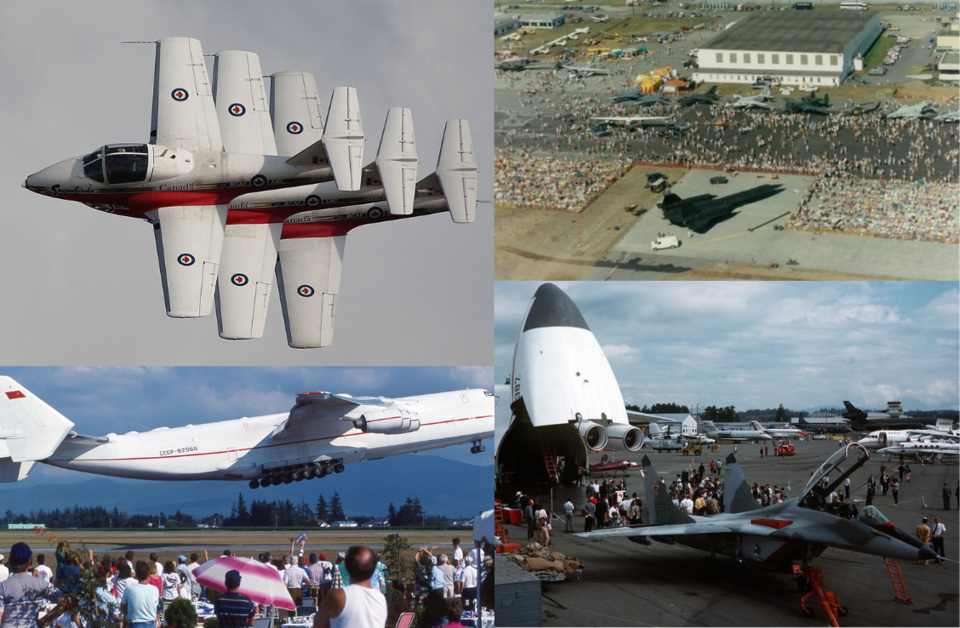As Canada's National Airshow, dubbed so by Prime Minister Pierre Trudeu in 1970, the Abbotsford International Airshow is a big deal in the aeronautics world.
It's one of the world's largest airshows; tens of thousands of people attend each year, though in the past it cracked 300,000 on occasion. British Airways even listed it as one of the best airshows to visit in 2024.
This year's event runs Aug. 9 to 11, and will bring out around 40 different planes on the ground, while dozens more will perform team and solo aerobatics above the crowds.
This year highlights include fighter jets like the F-22 Raptor, helicopter exhibitions and more.
So here are five things you might not know about the historic event.
1. The Snowbirds (sort of) debut
While the Snowbirds officially debuted in 1971, the 1970 Abbotsford airshow saw the first team flight of its precursor.
That year a team of Tutor aircraft flew in formation at the airshow as one of the demonstrations. That team would go on to form the Snowbirds, who returned in 1971 for their second ever official performance (their first was a one off show in Moose Jaw).
2. The Soviets let a Canadian Air Force major try out one of their planes
In 1989 the Soviet air force mad a splash in Abbotsford allowing several of their planes to be shown off, a rare thing during the Cold War.
As part of the event, Major Bob Wade was allowed to try out a MIG-29, one of the most advanced fighter jets in the world at the time.
To be clear, it wasn't like they allowed him to fly off with it, there was a second pilot, a Soviet air force member, who was there as well.
It was still a notable event, given the political climate of the time.
The 1989 show also saw a visit by the biggest plane that was ever built, the USSR's An-225 Mriya. Only one was ever built and it has since been scrapped.
3. There's a cairn with pieces of the Matterhorn, Parisian cobblestone and London Bridge
In 1970 a time capsule was buried, and to mark the spot a unique stone cairn was built, using pieces of rock from all over the world, including notable sights like the aforementioned London Bridge and Matterhorn.
It was opened at the 50th anniversary of the airshow being officially named Canada's National Airshow in 2020.
It included messages from dignitaries of the time, and a slide show of what people in the 1970s imagined aircraft would be like in 2020.
4. 1969 saw the Canadian debut of the Boeing 747 and the first fatal crash
Attendees on Aug. 8, 1969 had a lot going on. After Prime Minster Trudeau opened the event the first Boeing 747 to fly in Canada did it's rounds; the plane was brand new at the time, having made its first airshow appearance in Paris earlier in 1969 (the first commercial flight wouldn't take place until 1970).
However, the day was marred by a crash that happened just after the jumbo jet's flyby, as a much smaller plane, a Mini-Mustang, went into a death spiral and crashed. Luckily there was only one fatality, the pilot Scott Nelskog.
5. It takes over American airspace
Given the size of the airshow and its location, a lot of airspace is needed to manage everyone safely.
To do that, the airshow organizers get to take over a chunk of American airspace during the show.



